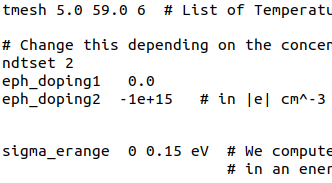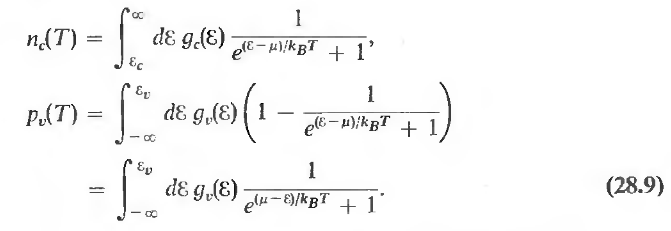Hello everyone,
I have one general question about the temperature-dependent Fermi level used in the calculation of mobility from e-ph coupling. How does code calculate the temperature dependence of Fermi level?, Is it calculated from the Fermi distribution function? If yes, then can someone explain it?
Yes, it’s adjusted based on the doping level you ask for (rigid band doping) and the temperature, based on the occupation function selected (occopt). Note that for some materials and/or strong doping it is known that the epc will be strongly screened (usually decreases) and in other cases (eg graphene) you need more accurate band structures and GW corrections to estimate the epc quantitatively (usually increases).
Thank you sir,
I understand it as follows: firstly code calculates the Fermi energy of a compound by filling the electrons from lower energy to upper energies until they fill the last electron. Once we have Fermi energy, then it will calculate occupancy based on Fermi-distribution functions at a particular temperature. After that based on the new occupancy, it will estimate the new chemical potential at that temperature.
Let me know if I am getting wrong it.
Second concern related to electron and hole density in mobility calculation-
In below input.png, we have two datasets one for without doping and 2nd for electron doping.

The below results are from without doping calculating, in which I have clear understanding about the e/h density.
But in below doping results, why hole density at valence bands region becomes zero at lower (upto 123 K) temperature.
Hi again,
indeed, this seems strange, in particular the h mobility is 0 in all cases?
@gmatteo @guillaumebrunin any ideas? Maybe the sigma_erange is imbalanced in favor of electrons?
M.
You are right sir, actually zero hole mobility is coming by considering only the CB region (from sigma_erange) for mobility calculation.
I also understood why hole density is zero upto 123 K temperature. Because due to electron doping, the Fermi energy lies far from the VBM, therefore hole density becomes zero upto particular temperature. This can also be understood by the Eq. 28.9 in the Ashcroft and Mermin book because (mu - E) factor in the exponential becomes large at lower temperatures.

Please let me know if I interpreted it wrongly.
Thank you sir!

